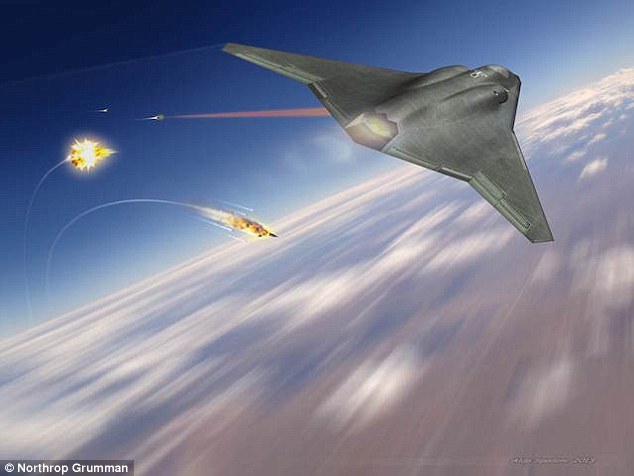U.S. military spending millions on missile-destroying lasers that can be mounted on drones
07/13/2018 / By Edsel Cook

The Pentagon wants a fleet of animal-inspired flying drones armed with lasers that can destroy any potential threat to the U.S., including enemy missiles waiting to be launched from their pads, reported The Daily Mail.
The U.S. Missile Defense Agency (MDA) has put in a budget request of $9.9 billion for 2019. Of that amount, $66 million will go into funding its Low Power Laser Demonstrator (LPLD).
The end goal of the LPLD program is to develop a laser that is small enough to fit aboard a drone and powerful enough to destroy missiles with one shot. The MDA promises a test-worthy system in two years’ time if its budget gets approved.
Defense officials are pinning their hopes on these lasers and other advanced anti-missile technologies to stop potential North Korean attacks against U.S. territories and allies in the Pacific region.
A DefenseOne.com article stated that large numbers of laser-armed drones can shoot down enemy missiles no matter where they are located. The best way to use them would be to deploy them within range of enemy territory so that they could destroy the missiles on the ground or intercept them as they are being launched.
These airborne attack craft will be armed with solid-state lasers that are a step above the older chemical lasers or solid-state bulk lasers. The new lasers will use the same fiber-optic technology as modern communications cables. That allows them to be built much smaller than previous generations of laser weapons while also generating enough power to destroy a large missile.
The first phase of the solid-state fiber laser program began last year when MDA contracted Lockheed Martin, Boeing, and General Atomics. Each company will devise a solution for a working laser weapon and present it to the Pentagon by 2019.
The winning company will be given further funding to build a prototype laser for testing by 2020 at the latest. (Related: Video game orbital lasers come to life: Chinese engineers propose to zap space debris out of orbit with giant lasers.)
Animal-inspired drones
Unmanned combat vehicles are expected to exert immense effects in future conflicts. The U.S. military has understandably spent many billions of dollars to make sure its fleet of combat drones is the best in the world.
To this end, the Department of Defense (DoD) launched the Defense Enterprise Science Initiative (DESI) this January. DESI will issue “defense challenges” that will hopefully inspire engineers and researchers to devise clever and practical solutions.
Sensors, mobility, and autonomy are this year’s focus. One of the defense challenges calls for the creation of autonomous drones that can match the agility of bats and flying insects.
DESI has called for a new paradigm in autonomous flight that combines agility and autonomy. Unmanned craft must be able to make swift decisions, switch directions, or dodge obstacles without human prompting. That means improving the algorithms that handle flight and decision-making trees until the drone can react fast enough.
Furthermore, the contest believes new technological advances can be gleaned from the myriad ways bats, flying insects, and other flight-capable animals move their bodies during flight.
According to DESI, the current strides in sensors, processors, and flight control algorithms are perfect for the job. It calls for the creation of an autonomous unmanned aerial vehicle (UAV) that is more maneuverable, survivable, and stealthy compared to the typical quad-copter or fixed-wing drone.
If DESI produces a workable animal-like drone, chances are it will be armed with a production version of the MDA’s solid-state fiber laser, paving the way for flocks of drones that will rain lasers upon enemy missile batteries.
Want to learn more about drones and other robots that are taking on more and more lifelike traits? Visit Robotics.news.
Sources include:
Tagged Under: aerial drones, animal-inspired, autonomous drones, autonomous flight, drone laser, future tech, laser technology, laser weapons, military drones, military tech, robotics, technology, unmanned drones, weapons tech




















